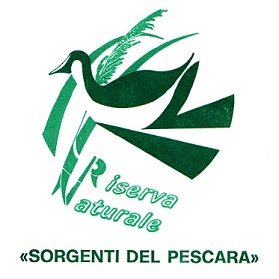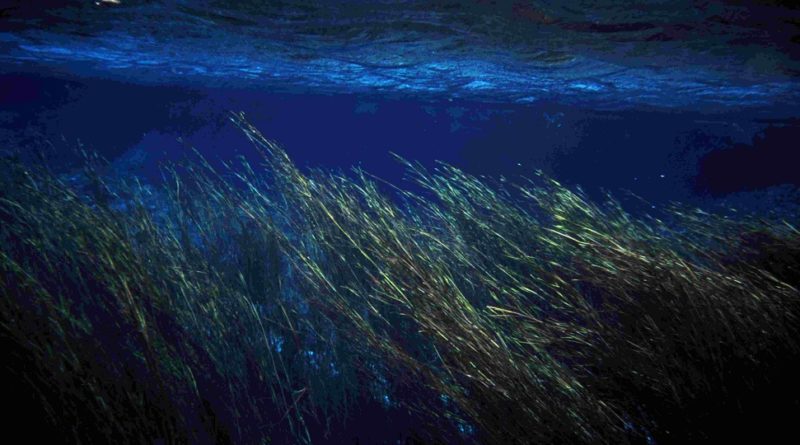🇬🇧 Springs hydrobiology
Hydrobiology of the “Sorgenti del Pescara”
The fascination of the Pescara springs through the biodiversity-rich backdrops.

The encounter between the bare rock of the Gran Sasso and the verdant slopes of the Maiella brings forth crystal clear sap that feeds one of the most abundant springs in the Apennines: the Pescara springs.
From the meeting of such different elements comes one of the most important rivers in Abruzzo. In fact, the water coming from the great Campo Imperatore aquifer, meeting the obstacle offered by the impermeable rock of the Maiella, gushes out at the foot of the Colle di Capo Pescara, emerging in a thousand rivulets that flow into a crystal-clear mirror of water with a thousand shades of colour: numerous sub-alvee springs, which gush out copiously on the bottom, give new and continuous lymph to this basin which, with a total constant flow of 7000 l/s, represents one of the most important spring systems in central-northern Italy (the Sirente aquifer also seems to make an important contribution to the spring system).
The body of water is the relict evidence of a larger lake that, in ancient times, covered the entire Peligna Plain: the Pescara river, an emissary of the reservoir, over time opened a breach in the Tremonti Gorges and the lake emptied, leaving this wonderful corner.




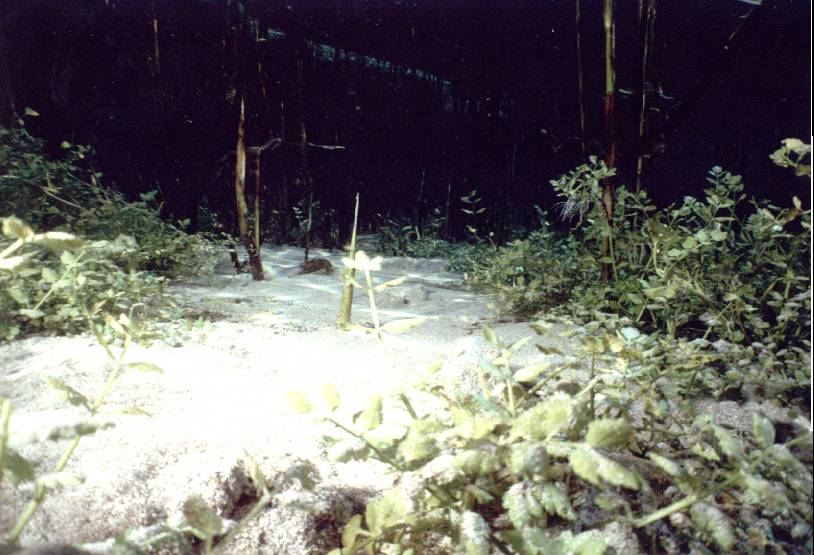
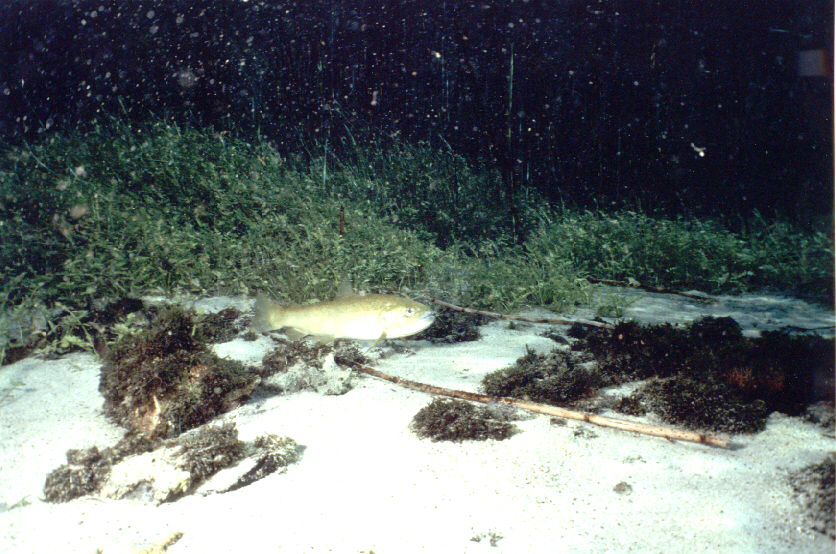
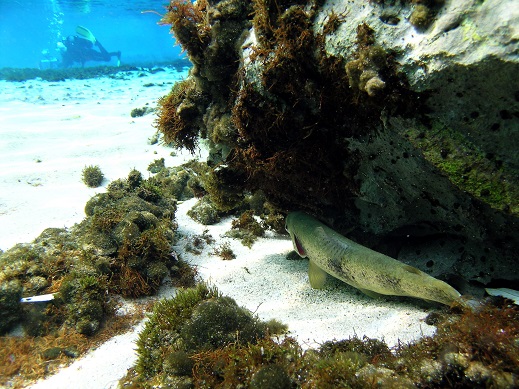
Salmo ghigii (Pomini, 1941)
Apennine or Adriatic trout
Kingdom: Animal
Family: Salmonidae
Italian common name: Mediterranean trout
Taxonomy and distribution
Rafinesque in 1810 described Salmo cettii as a new species, peculiar to Sicily and Sardinia with Salar macrostigma, found in the mountains of Algeria, described by Duméril in 1858. In the literature, in fact, S. cetti has often been synonymous with Salmo mascrostigma, a name to be used only for North African letrotes, which are morphologically different. More recently, Kottelat & Freyof (2007) listed S. cettii among the indigenous trout species present in Italy.
As for Salmo ghigii, Pomini described it as a separate species in 1941, indicating trout from the Sagittario river. Sommani (1950) refuted Pomini, considering S. ghigii a simple form of S. trutta. More recently, the presence of a population in the mid-Adriatic peninsular area has been discovered, whose phenotypic characteristics largely overlap with those of S. ghigii described by Pomini. Nowadays (AIIAD, 2013), S. cettii and S. ghigii are considered important Evolutionary Significant Units (ESU) in Italy, with numerous Management Units (MU), thus deserving of appropriate ad hoc conservation measures. In the Habitats Directive reports, the two ESUs will be grouped under the common name of Salmo cettii, as requested by the European Commission.
While S. cettii is distributed on the major islands (Sardinia and Sicily), in the lakes of Posta Fibreno and Ninfa, and in some Tyrrhenian watercourses in peninsular Italy, the distributional range of S. ghigii is ascribable to the Adriatic and Tyrrhenian Apennine basins.
S. ghigii is included in Annex II of the Habitats Directive among the animal and plant species of Community interest whose conservation requires the designation of Special Areas of Conservation.
(taken from “Manual for monitoring species and habitats of community interest in Italy” ISPRA – MITE2016)
Ecology
S. ghigii occupies the salmonid zone and the upper Cyprinic zone of the Apennine mountains; its habitat is represented by cold, oxygenated waters with a coarse substratum and a wealth of ravines in which it can take refuge. Their diet is varied and includes macrobenthos (especially trichoptera and ephemeroptera), but also adult insects, small fish and fry, of their own or other species. The breeding season is generally between November and January, sometimes even longer.
Surveys carried out as part of the Revision of the Fishing Map of the Province of Pescara led to the identification of trout nuclei attributable with certainty to Salmo ghigii; these are the results of the studies conducted:
– The *90 allele is completely absent in the Pescara springs and in the Pescara river at Popoli in the De Contra locality.
– The *100 allele is present with a frequency of over 50% in the San Callisto river near the cemetery of Popoli, in the Tirino river near the Montedison plant at Bussi officine, in the Lavino river at Scafa, and in the Aterno river near the confluence with the Sagittario. Genetic investigations carried out on Salmo trutta populations outside the province have shown a frequency of the *100 allele of over 50% in the Aterno river flowing in the Vittorito municipality and in the Sorgenti del Cavuto on the Sagittario river: both stations are located in the Province of L’Aquila.
Genetic studies have shown that in the waters of the Aterno – Pescara basin the native trout is not yet extinct: for this reason, the Provincial Administration of Pescara set up a memorandum of understanding with the Gran Sasso – Monti della Laga National Park and the Maiella – Morrone National Park in order to set up a work programme that would allow, starting from small nuclei already identified, the recovery, within the protected areas, of the strain of Mediterranean trout, thus creating real centres for the diffusion of the autochthonous genotype.
(taken from the Impact Assessment of the Regional Fish Calendar 2022)
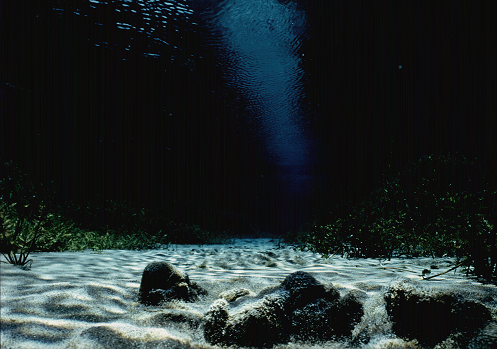
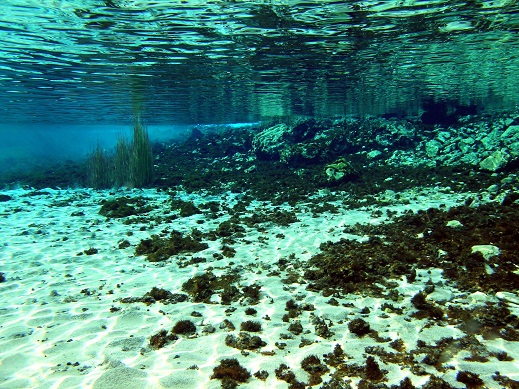
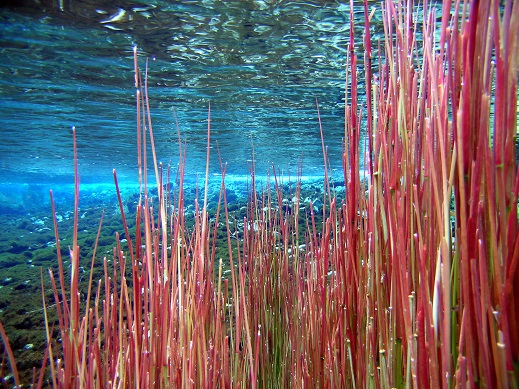
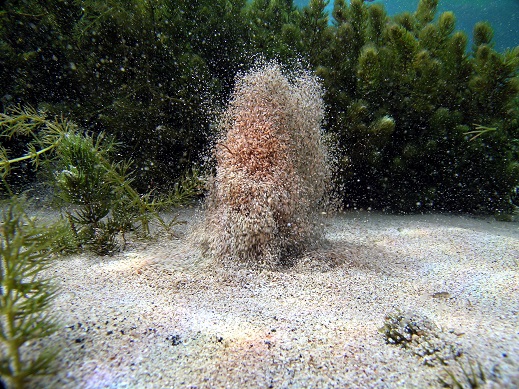






Austropotamobius pallipes (Lereboullet, 1858)
Crayfish
Systematic position:
Phylum: Artropoda
Class: Crustacea
Subclass: Malacostraca
Order: Decapoda
Family: Astacidae
Genus: Austropotamobius
Species: pallipes
The crayfish is a widespread species throughout Europe: it colonises cool, running, well-oxygenated waters rich in calcium (50-100 mg/l). It therefore prefers the upper reaches of rivers, the trout zone. Sometimes it also lives in lowland lakes, as long as they are fed by fresh water.
Sexual maturity is reached between 3 and 4 years of age. The crayfish mate in autumn: the female then seeks shelter in a safe hiding place. The incubation of the eggs coincides with the cold season: hatching takes place in late spring of the following year.
Crayfish populations used to be quite large in all Italian watercourses and also in our region: today they are drastically reduced due to environmental degradation linked to incorrect management policies.
The decline in crayfish populations has been particularly evident over the last thirty years, during which the increasing exploitation of water resources and the ever more massive use of pesticides and chemical fertilisers in agriculture have played a key role in the decline in the quality of water bodies, with often fatal effects on the survival of many species that once populated them. A further factor that has led to the drastic decrease in native shrimps from our region’s watercourses is the general lowering of the regimes of water bodies: in fact, the excessive withdrawal of water for civic or industrial uses, the construction of civil works, often ends up having a negative impact on the balance of aquatic ecosystems, causing a lowering of aquifers and the drying up of resurgences.
The decline in European populations has also been associated with the introduction, from the second half of the 19th century onwards, of allochthonous species, some of which were carriers of various agents of more or less high pathogenicity. One of these is responsible for what is commonly referred to as ‘crayfish plague’; the aetiological agent, Aphanomyces astaci, is a saprolegnale fungus that affects the central nervous system of the crayfish, causing it to die a rapid death; it is an obligate parasite that requires the presence of the host to survive, against which no effective treatment is known.
The first mass mortalities in native populations were reported in Lombardy and Veneto in 1865 (Ninni, 1865); the disease gradually spread to the rest of Europe, affecting Iberian populations in 1978 and Ireland in 1986. In Abruzzo, as in other areas of central Italy, mortality explosions occurred in the late 1970s, probably attributable to aphanomycosis.
In order to protect the scarce relict populations of crayfish and to encourage the spread of this crustacean in the watercourses of our region, the Provinces of Chieti, Pescara, L’Aquila, Teramo, Ascoli Piceno, Campobasso and Isernia have drawn up the project ‘Austropotamobius Pallipes: protection and management in the SCIs of Central Italy’, approved within the framework of national LIFE Nature funding.
Italian crayfish populations have frequently been the subject of taxonomic controversy; they are currently ascribed to the ‘italicus‘ subspecies of A. pallipes as proposed by Bott (1950, 1972) on the basis of morphological studies. However, recent genetic studies have highlighted differentiation values (Santucci et al, 1997; Nascetti et al, 1997; Bondanelli et al, in prep.), which would justify the elevation of the two taxa to a specific rank.
(taken from the Impact Assessment of the Regional Fish Calendar 2022)
Biology and ecology
The crayfish (Austropotamobius pallipes) was reported in numerous streams in central Italy until the 1970s; currently its presence is limited to a few small areas, preserved by the environmental alterations that have affected most aquatic ecosystems, where small relict populations survive.
Austropotamobius pallipes is included in Annex II of the Habitats Directive among the animal and plant species of Community interest whose conservation requires the designation of Special Areas of Conservation.
The populations in the Central Apennines – Adriatic slope area constitute an important portion, both in quantitative and biogeographical terms, of the species in the Mediterranean area.
The main causes that have led to the rarefaction of the species include the introduction of exotic crayfish, which carry diseases that are lethal for the native crayfish, pollution, the exploitation of numerous streams for hydroelectric purposes, with drastic decreases in the flow rate in the river bed, and poaching.
A. pallipes is a very demanding organism from an environmental point of view: its ideal habitat is mountainous, cool, well-oxygenated, pollutant-free, not too turbulent watercourses with a pH of 7 to 8, pebble beds and abundant aquatic vegetation. The crayfish is almost intolerant of any form of water pollution (herbicides, defoliants, pesticides and disinfectants, but also organic pollution due to the discharge of civil and livestock effluents, even of low magnitude); therefore its presence in a water body is an excellent indicator of uncontaminated waters.
Difficult to encounter due to its rarity, its shy nature and its predominantly nocturnal habits, the crayfish is greenish-brown in colour, can grow up to 12 centimetres long and weigh up to 90 grams.
Rocky crevices, submerged roots, trunks, leaves and fallen branches in the riverbed near the banks are the shelters where it spends most of the daytime hours; it digs burrows along the banks of the watercourses.
The diet of a crayfish is very varied, as it is an omnivorous animal. It feeds on invertebrates such as worms, molluscs, insect larvae and vertebrates such as tadpoles and small fish. It also sometimes attacks larger diseased fish, thus becoming an excellent scavenger that limits the spread of fish diseases. It does not disdain plants, which, especially in summer, can make up as much as 60-80% of its diet; it feeds on aquatic vegetation as well as on terrestrial plant remains and fruit that has accidentally fallen into the water.
The harvesting (fishing) of crayfish is prohibited or subject to very strict legal constraints throughout the country. The preservation and recovery of river environments, the control of the introduction of exotic species and the fight against poaching are the fundamental tools to protect this unique and precious organism and to prevent the impoverishment of the heritage of biological richness and diversity that its disappearance would cause.
(taken from the information board of project LIFE03 NAT/IT/000137)
Presence in the Pescara Springs Nature Reserve
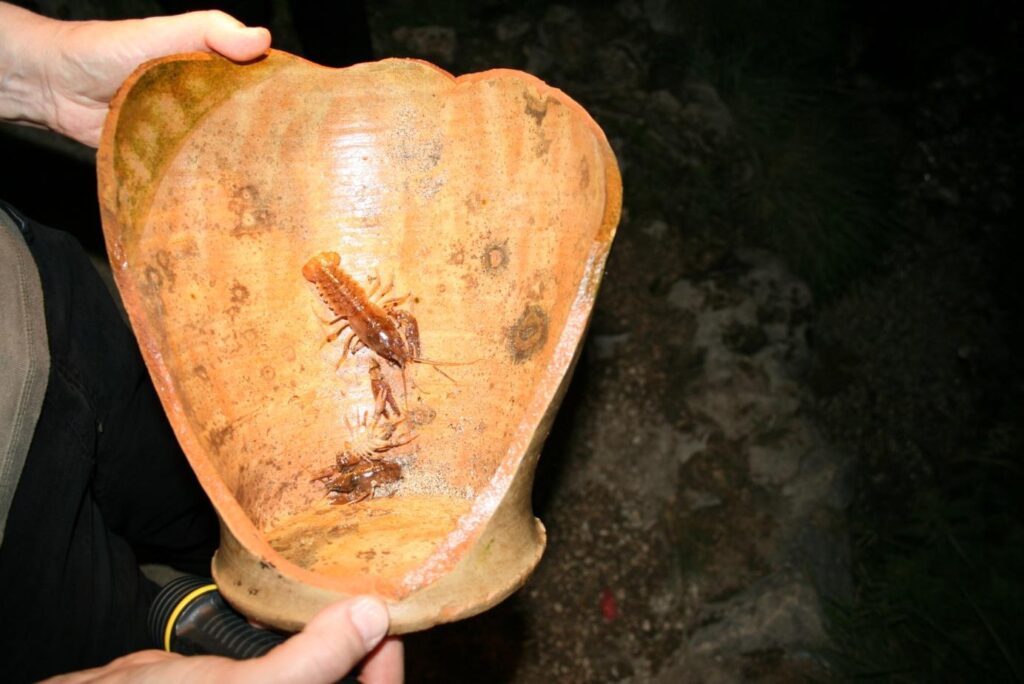
As part of a multidisciplinary research project carried out in the years 2007-2009 in the SCI IT7110097 “Fiumi Giardino – Sagittario – Aterno – Sorgenti del Pescara”, Luciano di Tizio, Lino Ruggieri and Maurizio Biondi conducted a survey on the presence of Austropotamobius pallipes in the “Sorgenti del Pescara” Guided Nature Reserve, collecting reliable testimonies and organising field research by placing pots on the bottom and using a backpack electrostunner. Finally, they organised a dive in the twilight and night-time hours that allowed them to count around 60 individuals between juveniles and adults of different age classes, 18 of which were temporarily captured for taxonomic identification, confirming the presence in the Regional Nature Reserve ‘Sorgenti del Pescara’ of a population of Austropotamobius pallipes, deserving of adequate protection. It should also be noted that the authors observed populations with breeding and juveniles of various age classes also along the course of the Aterno River. This probably followed the ‘Austropotamobius pallipes – LIFE 03 NAT/IT 000137′ project and the consequent reintroduction of specimens within the SCIs of the Provinces involved, including those of Pescara and L’Aquila.
(taken from It.J.Fresh.Ichthyol.
2014(1) : 202-206)
